Kamae
Expression of Inner Attitude
The fighting positions in taijutsu are more than rules of how to move the body. They are best described if you see them as an expression of the inner attitude. In battle or in life it is always important that body and mind are one. When performed correctly, the kamae reflect the heart of the Ninja.
The point of kamae is not, as in other martial arts, that every fighter adopts the same position, whether or not it suits his body, nor is the point of kamae to imitate any animal, but to move naturally, body, Spirit and soul are said to be one (shingitai).
Flowing, Not Static
The positions are not to be viewed as static forms, like a photograph, but are only occupied as long as they are useful. The fighting positions flow into each other. To e.g. For example, to avoid a deep kick, one could back away from shizen no kamae in ichimonji no kamae, immediately raise the attacked foot (hichō no kamae), kick the opponent’s knee, and land in jūmonji no kamae, immediately in kosei no kamae switch and execute a striking technique against the opponent’s back. What is certainly clear here is that there are five moves in a 2-3 second long combat sequence. Each position is maintained only as long as necessary. Under no circumstances does one stay longer in one position, as is common in other martial arts.
Natural Movement
As the student develops, the kamae become less and less important as specific positions and are incorporated into the fighter’s natural movement. Once these basics are mastered, the most important combat stance becomes the non-combat stance.
There are a large number of combat positions, e.g. also differ among the Ryū or bear other names, in addition, each fighting position can be taken at different heights (e.g. also kneeling) or be aimed at different heights.
Some of these positions are explained and shown below:
Observational Positions
The observation fighting positions are the basic positions. These stances are standing or sitting stances that one would normally be in when being attacked. From these positions you also bow and show respect to your opponent. Because these poses were developed in the Eastern world, where there are no chairs like in the Western world, the observing poses are natural sitting and standing positions.
Gasshō no kamae
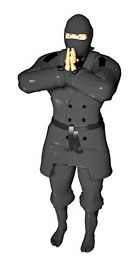
The gassho no kamae posture is used for the standing salute. Both feet are firmly on the floor, hands are clasped in front of the torso, elbows are slightly raised. The gaze goes straight over the fingertips to the opponent.
Fudōza no kamae
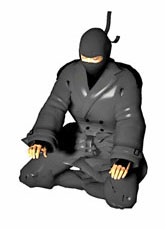
The fudoza no kamae posture is the traditional Japanese sitting posture. The left leg is folded under the body and the seat rests on the ankle of the left foot. The right leg is pulled in front of the body with the sole of the right foot against the knee. The back is straight and the spine is in its natural position. The view goes straight ahead.
Seiza no kamae
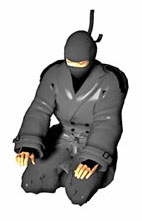
The seiza no kamae pose is the traditional Japanese kneeling pose. The legs are crossed behind the body and the seat rests on the soles of the feet. The upper body is straight, the knees slightly apart. The hands rest on the thighs. To show respect, bend your torso forward and place your palms on the floor in front of you.
Defending Positions
The defending battle stances are used when you need to respond to an attack by blocking or dodging before you can launch a counterattack. The body slips or slides in or out, away from the attack. You can then block or attack from this position.
Ichi no kamae
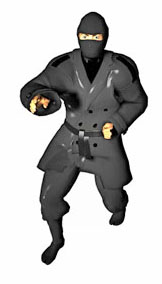
Ichi no Kamae is performed by stepping one leg forward in shizen and allowing most of the body weight to rest on the back leg. The body is turned obliquely away from the enemy. The front hand points towards the enemy, the back hand remains as a fist on the belt. This position is the position taken before ichimonji no kamae.
Ichimonji no kamae
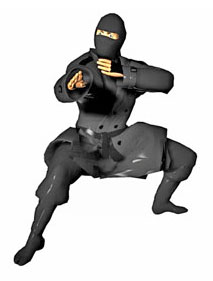
The ichimonji no kamae stance is performed with the body pulling back and dodging away from the attack. The back leg keeps the body upright. The shoulders are relaxed, the hips are turned so that the vital points are hidden. The open hands protect the face and body or intercept the opponent’s attack.
Doko no kamae
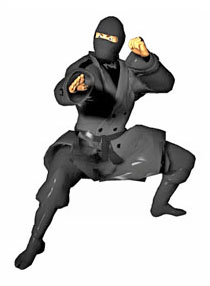
The doko no kamae posture is performed with the body pulling back and dodging away from the attack. The back leg keeps the body upright and the front leg prepares to push the body back even further if the need arises. The front hand blocks or intercepts the opponent’s blows, the back hand is held close to the ear and prepares a counter-blow.
Hicho no kamae
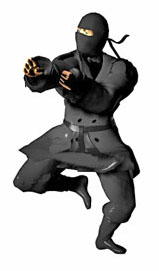
The hichō no kamae stance is used to evade an attack and the front leg is waiting to attack the opponent. To keep the balance, the leg standing on the floor is slightly bent. The arms are in a position to grab, block, or deliver punches.
Receiving Positions
The receiving fighting stances are used when responding to attacks with techniques that harmonize with the opponent’s power or go along with it. The body rotates or moves sideways to blend in with the enemy’s movement. Defenses are applied in the same way.
Shizen no kamae
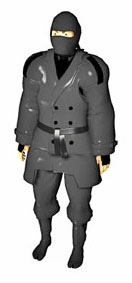
The Shizen no kamae posture is man’s natural standing position. The mind is alert, the body is relaxed and ready to move and react to the opponent. Body weight is on both feet, shoulders are relaxed, and arms hang naturally at your sides. This stance will be found in most attacks as it is the natural movement of walking or standing. Therefore, it is also the most important position and should be trained well.
Hanmi no kamae
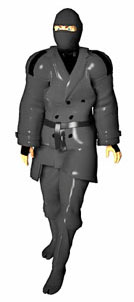
From shizen no kamae for hanmi no kamae you simply take a small step forward with one leg. The body is turned away from the opponent.
Goku no kamae
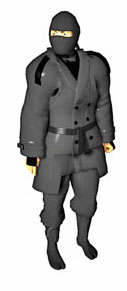
In goku no kamae you turn your body from shizen no kamae by 45° away from the opponent. The hands hang down naturally, as in shizen, the front hand is open, the back in fudō ken.
Hira (ichimonji) no kamae
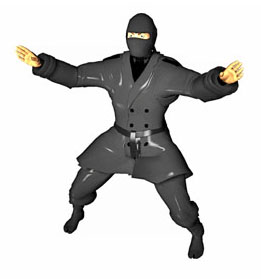
The hira ichimonji no kamae pose is a balanced, standing position from which the body can deviate. Body weight rests equally on both feet, both arms stretched out to the sides. They can be used to sweep, grab, or catch blows.
Hoko no kamae
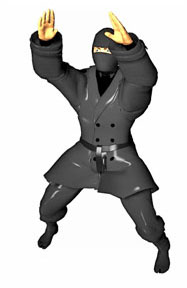
The hoko no kamae posture is another posture from which the body can respond to an attack. The weight rests on both feet, the arms are held slightly bent over the shoulders. The arms can be used to catch, redirect, or deliver punches.
Attacking Positions
The attacking combat stances are used when going from defense to attack. The positions are only partly defensive and for the most part offensive. Kicks, punches and throws are applied from these positions.
Jūmonji no kamae
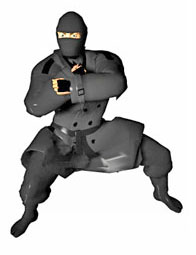
The jūmonji no kamae posture is easily recognized by the crossed wrists. This hand position protects the body during an attack. Elbows cover ribs, fists protect neck and face before delivering a punch. The weight is slightly more on the front foot and the back foot pushes the body forward.
Kosei no kamae
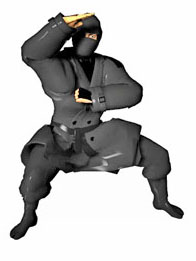
The kosei no kamae stance is used to attack, but it also allows you to intercept possible blows. The front hand is used to grab, redirect, or get the opponent’s attention. The back hand performs the attack.